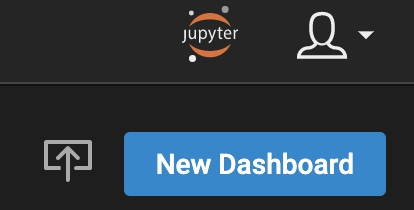Using HEAVY.AI with JupyterLab
HEAVY.AI Enterprise Edition comes with a fully integrated version of JupyterHub. This provides a secure, multi-user notebook environment for data exploration with OmniSci, and is the primary user interface for the HEAVY.AI Data Science Foundation.
You can quickly switch from visual data exploration, to a Data Science environment preloaded with useful open source libraries and tools that work with OmniSci transparently.
You can access JupyterLab, the next generation Jupyter notebook UI from within Immerse via a button located on the dashboard title

In addition, you can also launch JupyterLab from SQL Editor. In this case, a notebook is opened up with the query wrapped in an Ibis expression.

Tools and Utilities
HEAVY.AI provides a collection utilities to work with JupyterLab.
This is a collection of useful functions and Jupyter cell magics that allows running commands that are typically possible from heavysql from inside a notebook environment.